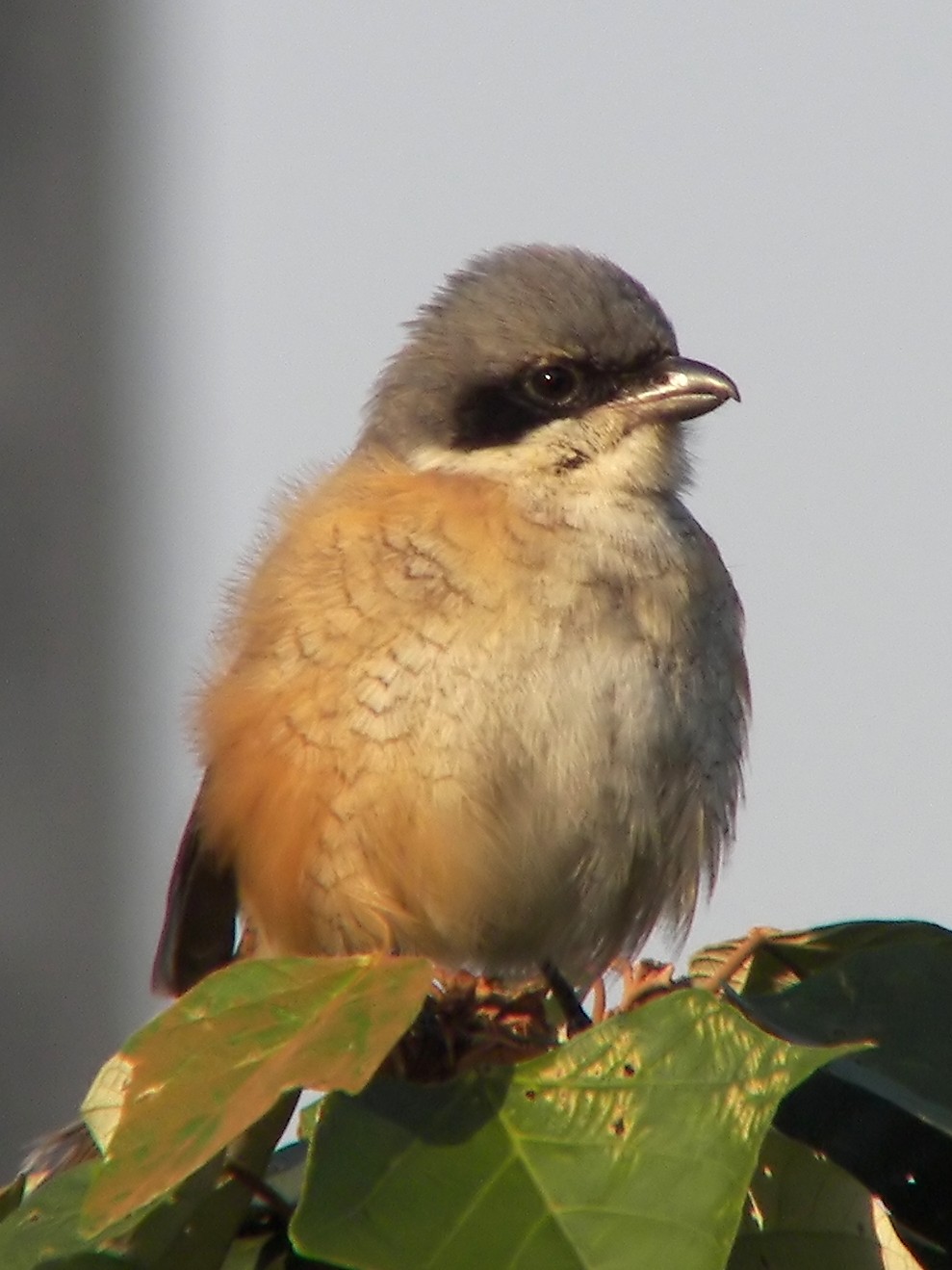Brown Shrike
A species of Typical shrikes Scientific name : Lanius cristatus Genus : Typical shrikes
Brown Shrike, A species of Typical shrikes
Botanical name: Lanius cristatus
Genus: Typical shrikes
Content
Description People often ask General Info
 Photo By CharlesLam , used under CC-BY-SA-2.0 /Cropped and compressed from original
Photo By CharlesLam , used under CC-BY-SA-2.0 /Cropped and compressed from original Description
This shrike is mainly brown on the upper parts and the tail is rounded. The black mask can be paler in winter and has a white brow over it. The underside is creamy with rufous flanks and belly. The wings are brown and lack any white "mirror" patches. Females tend to have fine scalloping on the underside and the mask is dark brown and not as well marked as in the male. The distinction is not easy to use in the field but has been tested with breeding birds in Japan where the female can be identified from the presence of a brood patch. The use of multiple measurements allows discrimination of the sex of about 90% of the birds. Subspecies lucionensis has a grey crown shading into the brown upperparts and the rump appears more rufous than the rest of the upper back. The tail is more brownish and not as reddish as in the red-backed shrike. Younger birds of lucionensis have a brown crown and lack the grey on the head. Subspecies superciliosus has a broad white supercilium and a richer reddish crown. The tail is redder and tipped in white. A number of confusing forms are known from central Asia where the populations of cristatus, isabellinus and collurio overlap. The taxonomy has been in a state of flux and some forms such as phoenicuroides formerly considered as subspecies of L. cristatus have been moved to the species L. isabellinus. Subspecies lucionensis has been recorded interbreeding with superciliosus in Ishikawa, Japan while superciliosus has interbred with Lanius tigrinus in central Japan. 
Size
19 cm
Colors
Brown
Black
Gray
White
Life Expectancy
5 years
Nest Placement
Shrub
Feeding Habits
Brown Shrike primarily consumes insects, along with small rodents and birds. It exhibits unique feeding behaviors such as impaling prey on thorns or barbed wire as a 'larder' for later consumption. This carnivorous strategy displays its dietary adaptations for hunting and food storage.
Habitat
The brown Shrike is commonly found in open environments with scattered bushes and trees, such as forest fringes, thickets, and vegetated areas near waterways. They favor taiga, tundra, meadows, and steppe-like river valleys for breeding. Elevations up to 1800 meters accommodate them, while non-breeding habitats include agricultural lowlands, scrublands, and grassy hills with sparse vegetation.
Dite type
Carnivorous
People often ask
General Info
Feeding Habits
Bird food type
Behavior
The brown shrike is a migratory species and ringing studies show that they have high fidelity to their wintering sites, often returning to the same locations each winter. They begin establishing wintering territories shortly after arrival and their loud chattering or rattling calls are distinctive. The timing of their migration is very regular with their arrival in winter to India in August and September and departure in April. 
Distribution Area
The nominate form breeds in northern Asia from Mongolia to Siberia and winters in South Asia, Myanmar and the Malay Peninsula. The race confusus described from the same region is not well marked but is said to have a wider white brow and paler upperparts and is sometimes included within the nominate population. Subspecies superciliosus (sometimes called the Japanese shrike) breeds on the islands of Sakhalin, Kuril and Japan and winters in Hainan, Sumatra, Java, and the Sundas. Subspecies lucionensis, sometimes known as the Philippine shrike (local names: tarat or pakis-kis), breeds in Korea and eastern China wintering mainly in Taiwan and the Philippines but also on the Andaman Islands and in peninsular India. Stuart Baker suggested that the species may breed in the Cachar Hills of Assam but the idea was questioned by Claud Buchanan Ticehurst. This species is rare in Europe and vagrants have been recorded in the United States and Canada. 
Species Status
Not globally threatened.
Scientific Classification
Phylum
Chordates Class
Birds Order
Perching birds Family
True shrikes Genus
Typical shrikes Species
Brown Shrike